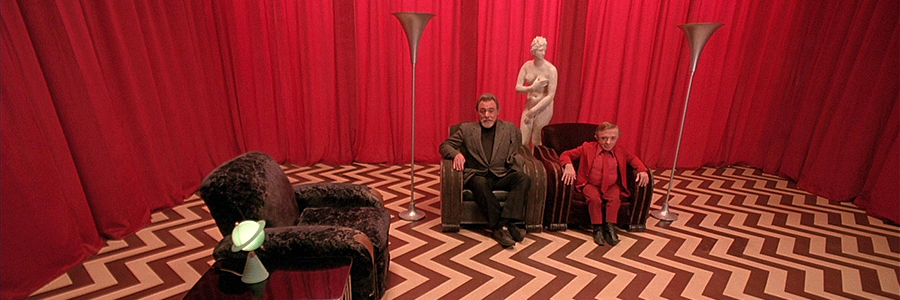
Twin Peaks: Fire Walk With Me
New Line Cinema
Original release: August 28th, 1992
Running time: 135 minutes
Director: David Lynch
Writers: David Lynch, Robert Engels, Mark Frost
Composer: Angelo Badalamenti
Cast: Sheryl Lee, Moira Kelly, David Bowie, Chris Isaak, Harry Dean Stanton, Ray Wise, Kyle MacLachlan
Laura’s murder 01:56:43 to 02:00:45
Deconstructing Cinema: One Scene At A Time, the complete series so far
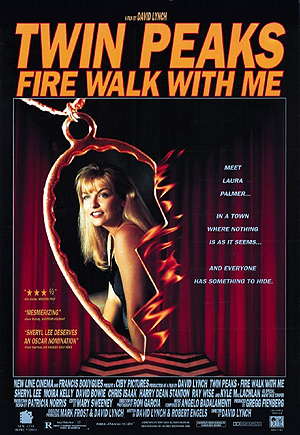
Dear Diary, it is very late at night and I do not care to check in or to alert someone of where I am or even if I am safe. I don’t care to think about it. I don’t want to know any more about myself, from anyone . . . too many lies have entered me, like bullets that made wounds . . . slow bleeding. It would be years later that I would notice; Begin to feel the weakness. Fall into the world of drugs. The world of sex for show and power. For strength I thought I wanted, I went to the wrong people. ~ Laura Palmer ¹
Growing up in a small town and always being seen as outsider can be a trying time for any youngster. During my teenage years my family expected me to fit in with the church-going crowd, despite having absolutely nothing in common with them. Attending a Catholic high school simply wasn’t enough; there was Sunday mass, Bible study, prayer groups and choir practice to contend with and every move I made felt like it was being watched with each minute of my day being meticulously timetabled. Eventually I couldn’t take it anymore and began rebelling hard, and sure enough that gave the gossiping community something else to talk about for a while. The funny thing is, by overprotecting me; my family drove me to the very things they were protecting me from. A self-fulfilling prophecy you might call it.
Although strictly forbidden by my family to watch it on television during its initial run (as it might’ve disturbed my studies or influenced my thoughts in some way), Twin Peaks was a show you couldn’t escape even if you lived under a rock (or heavy a King James Bible) during the early 90s. References to the quickly established cult TV show permeated every orifice of popular culture and I picked up on it from other shows I was allowed to watch and from the kids at school who talked about it. Despite catching the odd episode here and there, there was much about Twin Peaks I couldn’t quite piece together and had to rely on The Secret Diary Of Laura Palmer, written by Jennifer Lynch, which I’d checked out at the library back in 1992. It wasn’t until a few years later I realised that figuring out Twin Peaks was something I wasn’t alone in trying to do.
Set in the town of Twin Peaks with a population of 51,201, the show starts on the morning of February 24th with the discovery of homecoming queen Laura Palmer’s (Sheryl Lee) naked corpse tightly wrapped in a sheet of clear plastic on the bank of a river. As news of her death reverberates through the community, FBI Special Agent Dale Cooper (Kyle MacLachlan) arrives to investigate, linking the murderer’s M.O. with that of the murder of another girl in south-western Washington the previous year. It’s here we also start to see what lies beneath the smiling veneer of the wholesome community, and that Laura Palmer wasn’t really who she pretended to be.
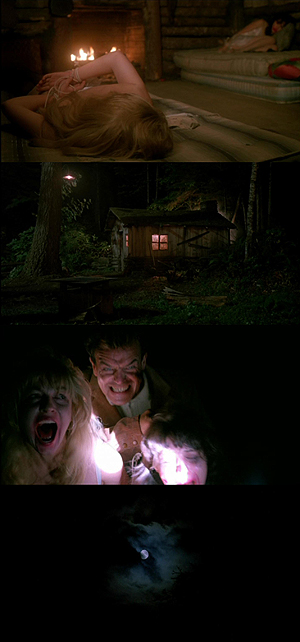
That all sounds pretty straightforward though, doesn’t it? But in the world of David Lynch, things are never played out that way as he uses his unique form of storytelling, mixed with a surrealist approach to horror and melodrama, to keep us guessing and asking that often repeated question – “What the heck just happened?!” as we tried to work out who killed Laura Palmer. However, once that mystery was finally resolved during the second season of the show, it became clear that Twin Peaks had lost some of its dark and wonderful magic. This, together with the fact that Lynch was directing fewer and fewer episodes of season two meant that public interest in Twin Peaks was waning by 1991 and this lead to its hiatus and eventual cancellation.
However, all was not lost. Released in 1992, Twin Peaks: Fire Walk With Me is both a prologue and an epilogue to the television series, beginning with the investigation into the murder of Teresa Banks (Pamela Gidley), a 17-year-old drifter and cocaine addict, and then going on to shed light on the last seven days in the life of Laura Palmer. Lynch uses the opportunity to revisit the lives of his unique and memorable characters, such as The Man from Another Place (Michael J. Anderson), James Hurley (James Marshall), Bobby Briggs (Dana Ashbrook), Leland Palmer (Ray Wise) the Log Lady (Catherine E. Coulson) and Laura’s best friend Donna, although this time played by Moira Kelly instead of Lara Flynn Boyle. Lynch also introduces several new characters to the story, including Agent Cooper’s partner Sam Stanley (Kiefer Sutherland), Agent Phillip Jeffries (David Bowie) and Special Agent Chester Desmond (Chris Isaak).
Like Blue Velvet (1986) before it, Twin Peaks: Fire Walk With Me is a film concerned with pulling back the screen to show us what life in our communities is really like. While folks may smile, wave and greet us with neighbourly banter, we never really know what’s going on inside and behind those closed doors. It’s really something I related to, especially when I first saw the film. It was at a time when I felt much like how Laura Palmer must’ve been feeling during her last days; suffocating beneath the lie of herself she was forced project while dealing with even darker secrets such as prostituting herself and snorting cocaine. Yet that’s not even the worst part of Laura’s ordeal – not counting her death of course.
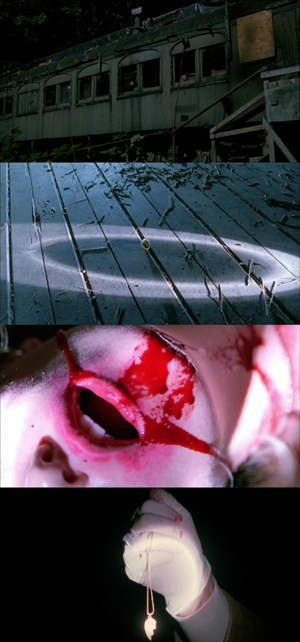
Until her death, the worst part of Laura’s ordeal was the sexual abuse she’d been suffering at the hands of a man she’d never been able to identify… a man who’d been raping her since she was twelve, but who was he? The clues in both the show and the film point to her father Leland Palmer, but as I mentioned before, things are really never as straightforward in a David Lynch film as we’d like it to be. Subtext and surrealism forms layer upon layer and the filmmaker leaves it to us to strip them away to discover, along with Laura, the shocking and unbelievable truth surrounding the baffling and at times frightening characters BOB (Frank Silva), MIKE (Al Strobel) and The Man from Another Place.
Throughout the film Lynch gives us glimpses into what these characters represent, but it’s only at the end when we put it all together again that the full tragedy of Laura Palmer’s life and death hits us. My first time watching it unfold I felt an uncontrollable wave of sadness come over me and it lasted for days. Twin Peaks: Fire Walk With Me remains a film that’s still difficult to watch even after all these years. The build-up to Laura’s murder at the hands of her possessed father starts with an orgy in Jacques’ cabin. Ronette and Leo are also there, but when Jacques decides he wants to tie Laura up and have sex with her, she starts to scream in panic. Ronette tries to help her, but she’s held back by Leo. It’s at this moment we see Leland approaching the cabin’s window from outside. The camera pulls in on a caged bird fluttering and a roaring log fire as he waits outside to attack Jacques. Leo escapes, but the girls are still inside, tied up, badly bruised and barely conscious.
As Laura sees her father she begins to scream, he begins to scream and we see MIKE rushing to the cabin knowing that BOB is about kill again. Leland has both Laura and Ronette on their feet now and pushing them out of the cabin, into the night and it’s a nightmarish scene as he forces them along to the abandoned train carriage. Their screams echo through the moonlit night. Finding herself tied up again, Laura asks her father “Are you going to kill me?” but he doesn’t answer, he places a mirror on the floor in front of her faces and instead of seeing her own reflection she sees BOB staring back at her for a brief moment – screaming.
BOB then appears at her side telling her he wants her while Ronette desperately pleads for her life and that she’s not ready to die, and just as the chaos is about to reach breaking point – all sound stops as a praying angel appears. With a look of serenity of her face, the angel, whose eyes remain closed in prayer, hovers above them in a long white dress and then disappears. The sound returns and the girls’ hands are now free, allowing Ronette an opportunity to help MIKE open the door and escape, but Leland knocks her unconscious and throws her body outside.
- [1] Jennifer Lynch The Secret Diary of Laura Palmer (1990), Penguin
- [2] John Kenneth Mui, Horror Films of the 1990s (2011), McFarland & Co Inc
What happens next is we see Laura preventing BOB from becoming her, which is what ultimately leads to her brutal and bloody murder. In these horrific moments Lynch uses slow strobe lighting to show Laura’s face screaming and Leland plunging a knife over and over. The choral sounds used by composer Angelo Badalamenti heighten the emotion of what’s playing out before us and these images are mixed with those of the Red Room and The Man from Another Place.
However we choose to interpret the events experienced in this scene from Twin Peaks: Fire Walk With Me, either that Leland was driven to abuse and murder his daughter because he was possessed by a demonic force, or because he was just insane, two things remain clear. One is that BOB is a manifestation of the evil that men do, and the second is that fire isn’t what burns us the most, but rather the secrets and lies about ourselves and others as it eventually engulfs us.
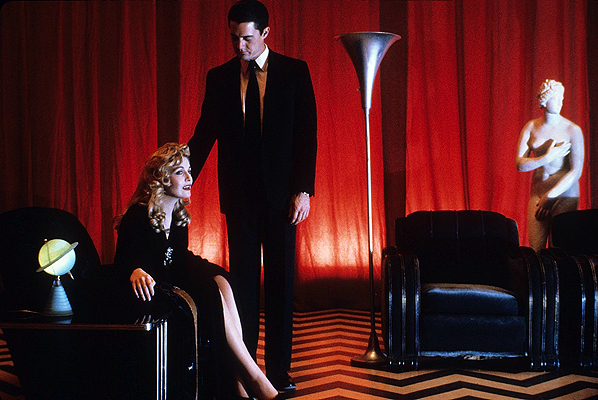

Patrick Samuel
The founder of Static Mass Emporium and one of its Editors in Chief is an emerging artist with a philosophy degree, working primarily with pastels and graphite pencils, but he also enjoys experimenting with water colours, acrylics, glass and oil paints.
Being on the autistic spectrum with Asperger’s Syndrome, he is stimulated by bold, contrasting colours, intricate details, multiple textures, and varying shades of light and dark. Patrick's work extends to sound and video, and when not drawing or painting, he can be found working on projects he shares online with his followers.
Patrick returned to drawing and painting after a prolonged break in December 2016 as part of his daily art therapy, and is now making the transition to being a full-time artist. As a spokesperson for autism awareness, he also gives talks and presentations on the benefits of creative therapy.
Static Mass is where he lives his passion for film and writing about it. A fan of film classics, documentaries and science fiction, Patrick prefers films with an impeccable way of storytelling that reflect on the human condition.
© 2022 STATIC MASS EMPORIUM . All Rights Reserved. Powered by METATEMPUS | creative.timeless.personal. | DISCLAIMER, TERMS & CONDITIONS
HOME | ABOUT | CONTACT | TWITTER | GOOGLE+ | FACEBOOK | TUMBLR | YOUTUBE | RSS FEED
CINEMA REVIEWS | BLU-RAY & DVD | THE EMPORIUM | DOCUMENTARIES | WORLD CINEMA | CULT MOVIES | INDIAN CINEMA | EARLY CINEMA
MOVIE CLASSICS | DECONSTRUCTING CINEMA | SOUNDTRACKS | INTERVIEWS | THE DIRECTOR’S CHAIR | JAPANESE CINEMA





